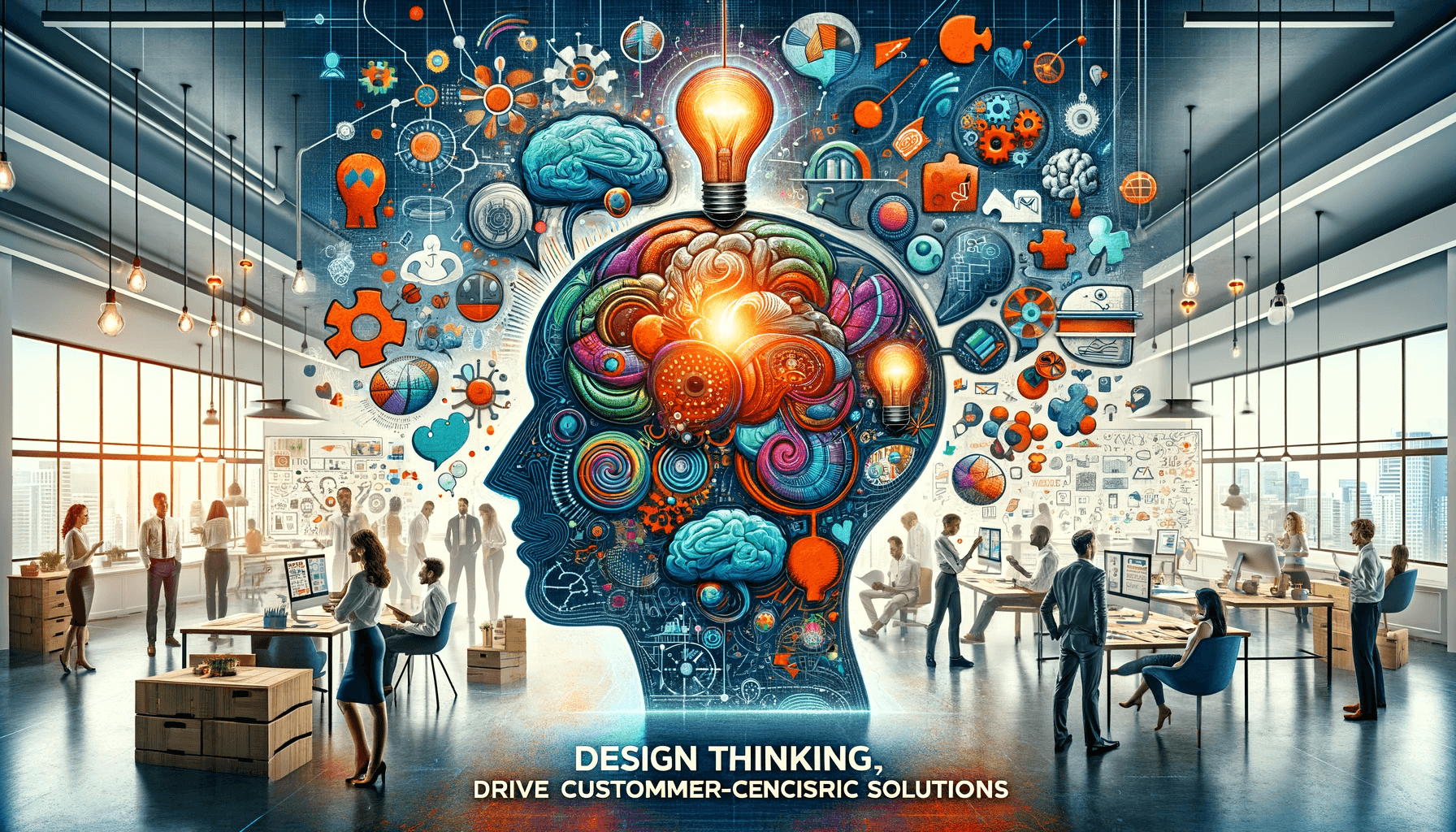Sponsor Millionaire’s Brain Academy
Table of Contents
What is Concept Development?
Concept development is a crucial step in turning ideas into reality. It is the process of refining and shaping creative thoughts into tangible concepts that can be developed further. The art of concept development requires a combination of imagination, critical thinking, and problem-solving skills. In this article, we will explore the importance of concept development, the steps involved in the process, techniques for generating ideas, evaluating and selecting the best concepts, refining and fleshing out the chosen concept, case studies of successful concept development, concept development across different industries, and tools and resources that can aid in this process.
The Importance of Concept Development
Concept development plays a vital role in the success of any project or venture. It allows us to transform abstract ideas into concrete plans and strategies. Without a well-developed concept, ideas remain mere thoughts, lacking direction and purpose. Concept development helps us define our ideas’ objectives, scope, and feasibility, enabling us to move forward with clarity and confidence. It facilitates effective communication and collaboration among team members, stakeholders, and investors. By mastering the art of concept development, individuals and organizations can unlock their creative potential and bring their ideas to life.
Steps in the Concept Development Process
The concept development process consists of several key steps guiding us from the initial idea to a fully developed one. These steps provide a structured framework for brainstorming, refining, and validating our ideas. The first step is to identify the problem or opportunity that the concept aims to address. This involves conducting market research, analyzing trends, and identifying gaps or pain points. Once the problem or opportunity is defined, the next step is to generate a wide range of ideas. Brainstorming, mind mapping, and SCAMPER (Substitute, Combine, Adapt, Modify, Put to another use, Eliminate, Reverse) can stimulate creativity and generate innovative concepts.
After generating a pool of ideas, the next step is to evaluate and select the most promising ones. Criteria such as feasibility, market potential, alignment with organizational goals, and uniqueness should be considered during the evaluation process. Once the best concepts are identified, refining and fleshing out the chosen concept is next. This involves conducting further research and feasibility studies, developing prototypes, and seeking feedback from potential users or customers. The final step in the concept development process is to create a comprehensive concept document or proposal that outlines the concept’s key features, benefits, implementation plan, and projected outcomes.
Techniques for Generating Ideas
The ability to generate creative and innovative ideas is fundamental to concept development. Several techniques can stimulate idea generation and break free from conventional thinking. One such technique is brainstorming, where individuals gather to generate ideas in an open and non-judgmental environment. Another technique is mind mapping, which involves visually hierarchically organizing ideas and concepts. This technique helps to explore different dimensions and connections between ideas. SCAMPER is another effective technique that prompts individuals to think about substitution, combination, adaptation, modification, putting ideas to another use, elimination, and reversal. This technique encourages thinking outside the box and generates unique ideas.
Additionally, conducting market research, analyzing trends, and observing customer behavior can provide valuable insights for generating ideas. Engaging in cross-disciplinary learning and seeking inspiration from unrelated fields can spark creativity and lead to innovative concepts. Keeping an idea journal or using idea generation apps can help capture ideas as they arise and serve as a valuable resource for future concept development.
Evaluating and Selecting the Best Concepts
Once a pool of ideas has been generated, it is essential to evaluate and select the most promising concepts to move forward with. Evaluation criteria can vary depending on the specific context and goals of the concept. Feasibility is crucial, as it determines whether the concept is technically and economically achievable. Market potential is another important criterion, as it assesses the demand and profitability of the concept. Alignment with organizational goals and values is also vital, as it ensures that the idea aligns with the organization’s overall vision and mission. Uniqueness and competitive advantage are additional factors to consider, as they determine the concept’s ability to stand out in the market.
To evaluate concepts effectively, involving a diverse group of stakeholders who can provide different perspectives and expertise is beneficial. Conducting concept tests, focus groups, and surveys can also help gather feedback and insights from potential users or customers. By carefully evaluating and selecting the best concepts, individuals and organizations can increase their chances of success and minimize the risk of pursuing unviable ideas.
Refining and Fleshing Out Your Chosen Concept
After selecting the most promising concept, the next step is refining and refining it further. This involves conducting in-depth research, gathering additional data, and developing prototypes or mock-ups. Research can include studying similar concepts or products, conducting user interviews, and analyzing market trends. Feasibility studies can be conducted to assess the concept’s technical, financial, and operational aspects. Developing prototypes or mock-ups allows for testing and validation of the concept’s functionality and user experience.
Seeking feedback from potential users or customers is crucial to the refinement process. Their insights and suggestions can help identify areas for improvement and ensure that the concept meets their needs and expectations. Iterative refinement is often necessary to address any shortcomings or limitations of the concept. This involves making adjustments, modifications, or even pivoting the concept based on the feedback received. By continuously refining and iterating the chosen concept, individuals and organizations can enhance its quality, feasibility, and market fit.
Case Studies of Successful Concept Development
To better understand the power of concept development, let’s explore a few case studies of successful concepts that have transformed industries and disrupted the market.
Case Study 1: Tesla’s Electric Vehicles
Tesla revolutionized the automotive industry with its electric vehicles. The concept of developing high-performance, sustainable, and technologically advanced electric cars was a game-changer. Through meticulous concept development, Tesla created a brand that appeals to environmentally conscious consumers and delivers superior performance and cutting-edge technology. By focusing on continuous innovation and refinement, Tesla has become a leader in the electric vehicle market and has paved the way for a sustainable future.
Case Study 2: Airbnb’s Sharing Economy
Airbnb disrupted the traditional hospitality industry by introducing the concept of a sharing economy. By connecting travelers with individuals with spare rooms or properties, Airbnb created a platform offering unique and personalized accommodation experiences. Through concept development, Airbnb identified the untapped potential of unused spaces and transformed them into valuable assets. This concept resonated with travelers seeking alternative accommodation options and created a global community of hosts and guests.
Case Study 3: Apple’s iPhone
Apple’s iPhone revolutionized the smartphone industry by introducing a concept that combined a phone, music player, and internet device into one sleek and user-friendly package. Through meticulous concept development, Apple identified the need for a device that seamlessly integrates various functions and provides a superior user experience. By focusing on simplicity, aesthetics, and innovation, Apple’s iPhone became a global phenomenon, transforming how we communicate, work, and access information.
These case studies highlight the transformative power of concept development and the impact it can have on industries and society as a whole.
Concept Development in Different Industries
Concept development is a versatile process that can be applied across various industries. Let’s explore how concept development is utilized in different sectors.
Technology Industry
In the technology industry, concept development drives innovation and product development. Companies like Google, Microsoft, and Apple invest heavily in concept development to create cutting-edge products and services. Concept development is at the core of technological advancements, from conceptualizing new software applications to developing revolutionary hardware devices.
Fashion and Design Industry
Concept development is essential for creating unique and trendsetting collections in the fashion and design industry. Fashion designers and brands continuously explore new concepts, themes, and materials to create innovative designs that captivate consumers. Concept development enables designers to translate their creative vision into wearable art that resonates with their target audience.
Food and Beverage Industry
Concept development is crucial in the food and beverage industry, where new culinary concepts and dining experiences are constantly being introduced. Chefs and restaurateurs conceptualize innovative menus, concepts, and dining experiences to cater to evolving consumer preferences. Concept development allows them to create unique and memorable dining concepts that stand out in a highly competitive industry.
Healthcare Industry
Concept development is vital for developing new treatments, medical devices, and healthcare solutions in the healthcare industry. Pharmaceutical companies invest in concept development to discover new drugs to improve patient outcomes. Medical device manufacturers utilize concept development to create innovative devices that enhance patient care and treatment options.
Concept development is a dynamic and versatile process that adapts to each industry’s unique needs and requirements, enabling innovation and growth.
Tools and Resources for Concept Development
Concept development can be facilitated by utilizing various tools and resources that foster creativity, collaboration, and organization. Here are some valuable tools and resources that can aid in the concept development process:
Mind Mapping Software
Mind mapping software such as MindMeister and XMind allows for visualizing ideas, organizing concepts, and creating connections between elements. These tools provide a digital platform for brainstorming, capturing ideas, and creating concept maps.
Idea Generation Apps
Idea generation apps such as Ideaflip and Ideament provide a platform for capturing and organizing ideas on the go. These apps allow individuals to record ideas, add notes, and categorize concepts for future reference.
Design Thinking Framework
The design thinking framework is a problem-solving approach emphasizing empathy, ideation, prototyping, and testing. It provides a structured process for concept development and encourages a user-centered approach.
Concept Development Workshops
Concept development workshops facilitate collaboration and idea generation among team members. These workshops provide a platform for sharing ideas, receiving feedback, and collectively refining concepts.
Online Communities and Forums
Online communities and forums like Reddit and Quora offer a platform for connecting with like-minded individuals, seeking advice, and sharing insights. These platforms can be valuable resources for gathering inspiration, learning from others, and staying updated with industry trends.
Conclusion: Harnessing the Power of Concept Development
Concept development is the key to transforming ideas into reality. By mastering the art of concept development, individuals and organizations can unlock their creative potential, drive innovation, and bring their ideas to life.
The concept development process involves several steps, including generating ideas, evaluating and selecting the best concepts, refining and fleshing out the chosen concept, and creating a comprehensive concept document. Techniques such as brainstorming, mind mapping, and SCAMPER can be employed to stimulate creativity and generate innovative concepts.
Evaluating concepts based on feasibility, market potential, and alignment with organizational goals is essential for selecting the most promising ideas. Concepts can be further developed and enhanced through iterative refinement, feedback gathering, and continuous improvement.
Case studies of successful concept development in industries such as technology, fashion, and healthcare demonstrate the transformative power of this process. Tools and resources such as mind mapping software, idea generation apps, and concept development workshops can aid the concept development journey.




